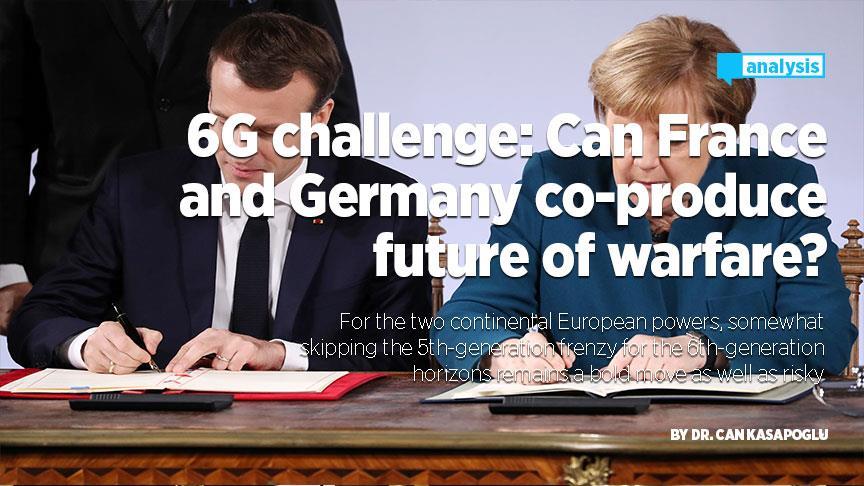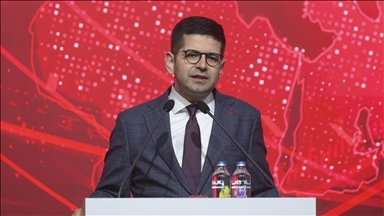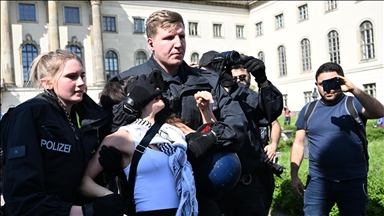6G challenge: Can France and Germany co-produce future of warfare?
For the two continental European powers, somewhat skipping the 5th-generation frenzy for the 6th-generation horizons remains a bold move as well as risky

Istanbul
By Dr. Can Kasapoglu
The writer is a defense analyst at the Centre for Economics and Foreign Policy (EDAM), an Istanbul-based think-tank.
ISTANBUL
German Defense Minister Ursula von der Leyen and French Defense Minister Florence Parly recently announced probably the most ambitious cooperative defense project in Europe. The two nations are to develop a 6th-generation combat aircraft. In fact, French President Emmanuel Macron and German Chancellor Angela Merkel first voiced the idea of jointly producing a next-generation fighter, back in 2017. A closer glimpse at the -- still conceptual -- 6th-generation aircraft and the required technological advancements suggest that these systems could indeed mark the real “revolution in military affairs” (RMA) of the 21st century. Therefore, the Franco–German effort would probably mean more than merely a bilateral defense investment; an attempt to catch up with the global great power competition in which Europe has so far lagged behind.
6th-generation air warfare: beyond human cognition
The 6th-generation aircraft -- and the next generation air warfare -- remain highly conceptual at present, especially given that armed forces around the globe are still striving to digest the 5th-generation (i.e. the F-22, the F-35, and the Chinese J-20) novelties that have recently entered into service. In essence, the forthcoming 6th-generation platforms and air warfare systems will probably enjoy the 5th-generation aircraft’s revolutionary features along with some groundbreaking technological leaps.
What would the 5th-generation aircraft bring to warfighting and what should one expect from the 6th generation? The F-35’s design philosophy gives important clues in this respect. The essence of the 5th-generation aircraft are stealth capabilities, increased capacity of penetrating into denied airspaces, and multi-domain connectivity. Manufacturers of these assets focus on minimizing the radar signature, equipping the platforms with state-of-the-art sensors, boosting onboard and offboard features, and providing the aircraft with unprecedented situational awareness. More importantly, the 5th-generation air forces will master network-centric warfare and joint coalition operations. Information superiority remains at the epicenter of the 5th-generation understanding. On a separate note, the combination of stealth technologies and swiftly developing beyond-visual-range air-to-air missiles is already making air warfare more complex than ever.
The 6th-generation, theoretically, will go beyond the 5th-generation aircraft’s skills in many aspects. The present literature suggests that the 6th-generation platforms will be “optionally-manned”, meaning they could fly with or without a pilot onboard. If achieved, such an advancement would mark a critical transition in the world’s air forces’ orders of battle. Besides, since optionally-manned or unmanned squadrons will completely alter our understanding of managing the risk of casualties, they could drastically re-shape the known concept of operations and rules of engagement in many corners of the world. Again, available writings on the 6th-generation aircraft predict that these platforms would further advance the 5th generation’s connectivity by enabling sensor fusion with drones and satellites. Notably, the 6th-generation aircraft could function as a platform for launching swarming drone strikes. They will probably carry directed energy weapons (DEWs) too.
Without a doubt, managing such complicated tasks and dealing with a huge amount of data are beyond the human cognitive capabilities. Before the 5th-generation aircraft, defense industry and aviation experts tended to solve this problem by multi-crewing some platforms of the 3rd and 4th generations, and thereby introducing new roles into the cockpit. What the 5th generation has so far brought, however, are single-seat designs. If the 6th generation follows suit at large, and because it will deal with a huge amount of data and multi-tasking in a more complex battle space, the only way forward is to foster artificial intelligence (AI) capacity and human-machine teaming.
Could France and Germany make it?
On the one hand, the incumbent governments in Germany and France have indeed pledged to give robust political support for proceeding with the joint 6th-generation combat aircraft.
On the other, however, one should take serious hurdles into consideration too. For one, the German and French export policies and flexibilities are very different. Probably, the French defense giants would not want to lose lucrative markets, most notably the Gulf, due to the sensitive German political landscape. Secondly, while the French defense posture still pursues expeditionary characteristics, the German political-military elite are not on the same page. Thus, technical expectations from the planned joint platform could differ to a great extent. Thirdly, at some point, reaching out to the British and their future 6th-generation aircraft, the Tempest, for a broader European cooperation could be a problem, especially under the Brexit conditions. Spain’s decision to join the Franco-German program is noteworthy in this respect. Reportedly, the Spanish Defense Ministry assumed that the British and the Franco-German programs would eventually merge given the pressing investment requirements. Yet, politically, if Paris and Berlin were to “sell” the new 6th-generation fighter as the “airwing of the European Army”, then it would be nearly impossible to get London onboard for a merger. This may sound a little bit, say, remote to many readers. But in fact, a brief tour to influential defense think-tanks in Washington, London, and key Continental European capitals would clearly reveal the severity of the present transatlantic fault lines. After all, one should recall that the previous chief of the Luftwaffe (the German Air Force) had to leave his post following his advocacy for the F-35 to replace the ageing Tornados.
It is all about great power competition
All in all, Paris and Berlin have decided to upgrade their air forces, which are currently equipped with 4,5th-generation aircraft (the Dassault Rafale and the Eurofighter Typhoon), directly to the 6th-generation aircraft-enabled capabilities instead of catching up with the current 5th-generation race (Turkey, for example, is striving to establish a 5th-generation air force through the F-35 multirole aircraft level-3 partnership and the indigenous stealth air superiority fighter TF-X project; the UK is also acquiring the F-35). For the two continental European powers, Germany and France, somewhat skipping the 5th-generation frenzy for the 6th-generation horizons remains a bold move as well as risky. From a defense industrial standpoint, it makes sense to field a next-generation aircraft in the late 2030s or the early 2040s with newly enabled features. Moreover, building a 6th-generation fighter aircraft is more than designing a stealthy airframe. It would necessitate a big AI investment, producing unmanned wingman platforms and even swarms, equipping the aircraft with robust electronic warfare systems and state-of-the-art weapons, and ensure a very high level of network connectivity that would go beyond the 5th generation. It is all about the next revolution in military affairs, and thereby, the great power competition.
To be realistic, so far, Europe has failed to become a primary actor in the global struggle. Rather, the rivalry between the U.S. and China in key technological advancements as well as Russia’s military activism and hybrid warfare concepts have dominated the headlines. It still remains to be seen whether the differences of opinion and strategic timidity or a sober wake-up call will prevail in Europe’s future defense planning.
* Opinions expressed in this article are the author’s own and do not necessarily reflect the editorial policy of Anadolu Agency. Anadolu Agency website contains only a portion of the news stories offered to subscribers in the AA News Broadcasting System (HAS), and in summarized form. Please contact us for subscription options.







